
How to Use MQ-138 SENSOR FORMALDEHYDE GAS: Examples, Pinouts, and Specs
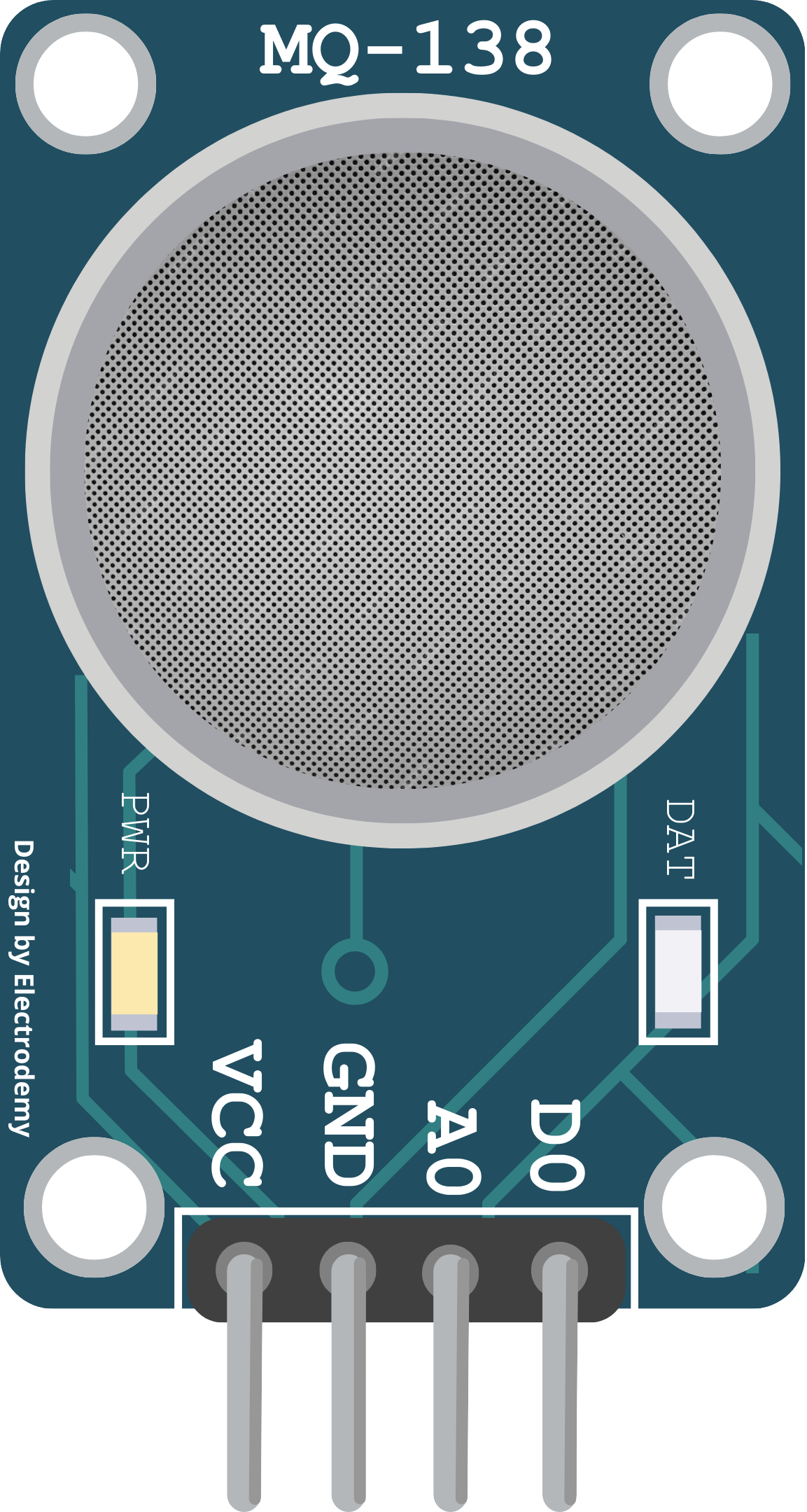
 Design with MQ-138 SENSOR FORMALDEHYDE GAS in Cirkit Designer
Design with MQ-138 SENSOR FORMALDEHYDE GAS in Cirkit DesignerIntroduction
The MQ-138 sensor is an electrochemical gas sensor designed for the detection of formaldehyde (HCHO) in the air. It is widely used in various applications such as indoor air quality monitoring, industrial safety, and environmental protection. The sensor's high sensitivity and fast response time make it an ideal choice for detecting formaldehyde concentrations in real-time.
Explore Projects Built with MQ-138 SENSOR FORMALDEHYDE GAS
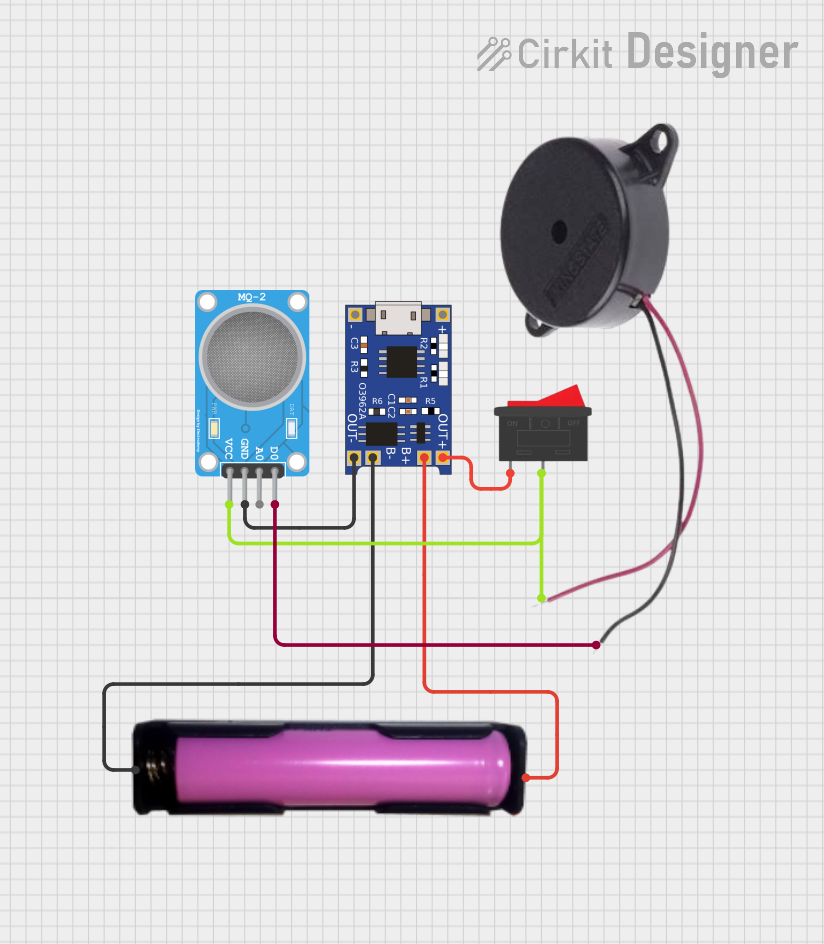
 Open Project in Cirkit Designer
Open Project in Cirkit Designer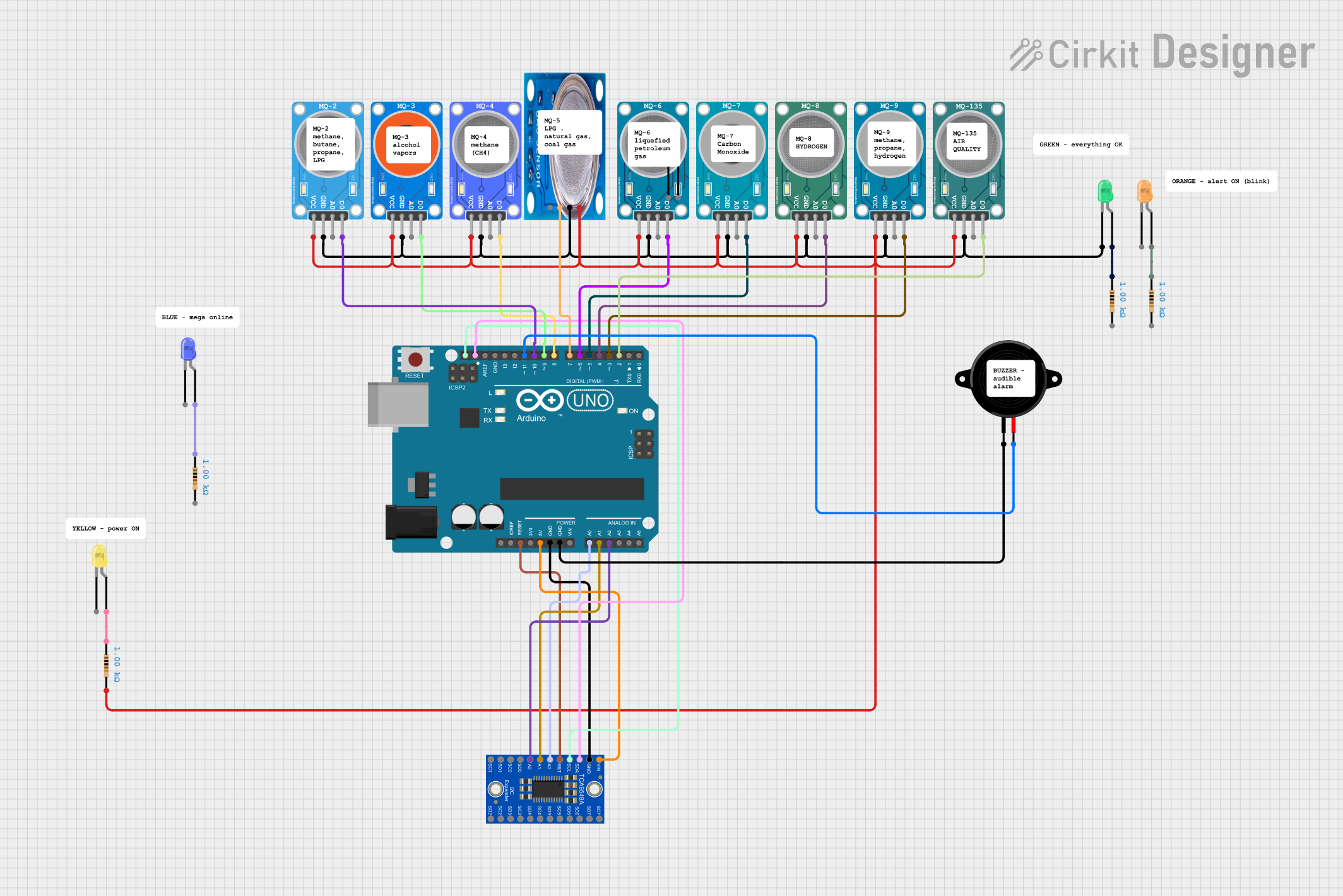
 Open Project in Cirkit Designer
Open Project in Cirkit Designer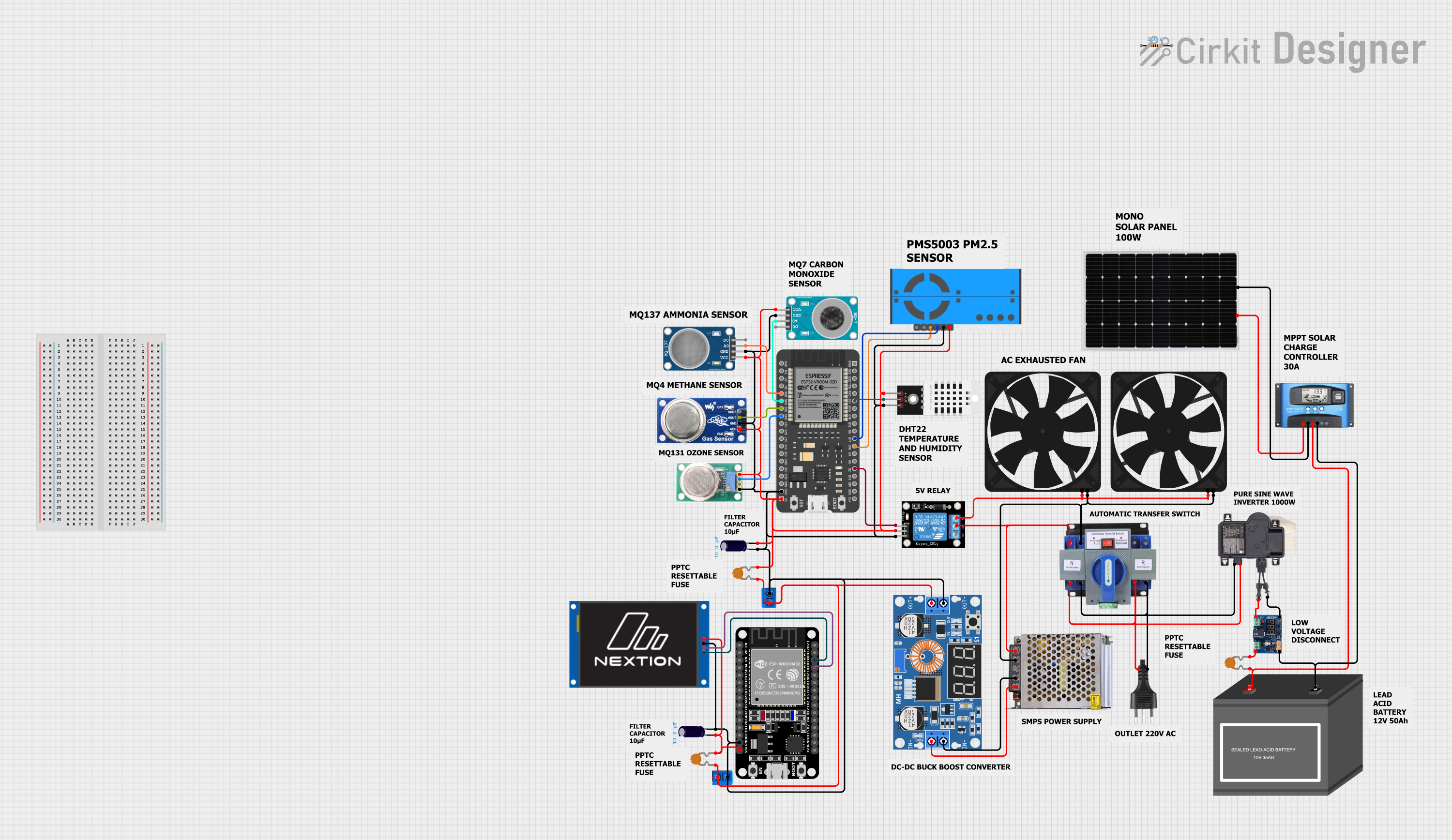
 Open Project in Cirkit Designer
Open Project in Cirkit Designer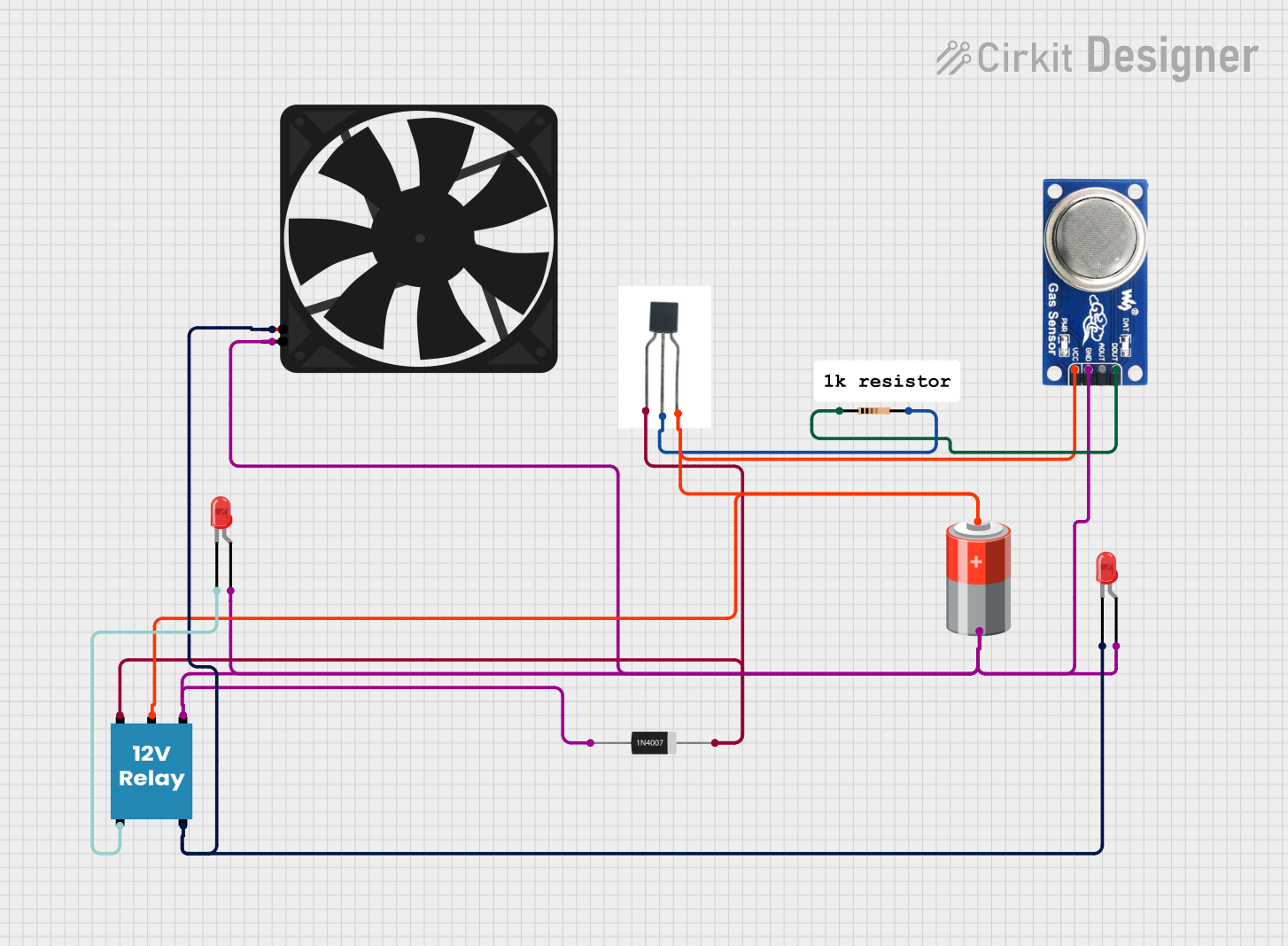
 Open Project in Cirkit Designer
Open Project in Cirkit DesignerExplore Projects Built with MQ-138 SENSOR FORMALDEHYDE GAS

 Open Project in Cirkit Designer
Open Project in Cirkit Designer
 Open Project in Cirkit Designer
Open Project in Cirkit Designer
 Open Project in Cirkit Designer
Open Project in Cirkit Designer
 Open Project in Cirkit Designer
Open Project in Cirkit DesignerCommon Applications and Use Cases
- Indoor air quality monitoring
- Environmental monitoring
- Industrial safety systems
- Smart home systems
Technical Specifications
Key Technical Details
- Target Gas: Formaldehyde (HCHO)
- Detection Range: 5 to 500 ppm
- Preheat Duration: 24 hours for initial use
- Response Time: ≤ 90 seconds
- Recovery Time: ≤ 90 seconds
- Working Voltage: 5V ± 0.1
- Heater Voltage: 5V ± 0.1
- Heater Power: Approx. 800mW
- Operating Temperature: -10°C to 50°C
- Relative Humidity: 95% RH non-condensing
Pin Configuration and Descriptions
| Pin Number | Pin Name | Description |
|---|---|---|
| 1 | VCC | Power supply (5V) |
| 2 | GND | Ground |
| 3 | DOUT | Digital output (TTL logic level) |
| 4 | AOUT | Analog output (proportional to HCHO) |
Usage Instructions
How to Use the Component in a Circuit
- Powering the Sensor: Connect the VCC pin to a 5V power supply and the GND pin to the ground.
- Reading the Sensor:
- Analog Output: Connect the AOUT pin to an analog input on your microcontroller to read the concentration of formaldehyde.
- Digital Output: Connect the DOUT pin to a digital input on your microcontroller. The digital output can be used to detect if the gas concentration exceeds a certain threshold.
- Calibration: Before using the sensor for accurate measurements, it should be calibrated in an environment with a known concentration of formaldehyde.
Important Considerations and Best Practices
- Ensure the sensor is preheated for the recommended duration before initial use.
- Avoid exposure to high concentrations of organic solvents, silicon compounds, and sulfur compounds as they may affect the sensor's performance.
- The sensor's readings can be affected by temperature and humidity; compensate for these factors in your application.
- Regularly calibrate the sensor to maintain accuracy.
Troubleshooting and FAQs
Common Issues Users Might Face
- Inaccurate Readings: Ensure the sensor is properly calibrated and not exposed to interfering gases.
- No Response: Check the power supply and connections to the sensor.
Solutions and Tips for Troubleshooting
- If the sensor is not responding, verify that the power supply is 5V and the connections are secure.
- For inaccurate readings, recalibrate the sensor and ensure it is used within the specified temperature and humidity range.
FAQs
Q: How often should the MQ-138 sensor be calibrated? A: The sensor should be calibrated periodically, depending on the usage and the environmental conditions.
Q: Can the MQ-138 sensor detect other gases? A: While the sensor is designed for formaldehyde, it may respond to other gases. It is important to use the sensor in an environment where the target gas is the primary concern.
Q: Is the MQ-138 sensor suitable for outdoor use? A: The sensor is designed for indoor use and may not perform reliably outdoors due to environmental factors.
Example Arduino Code
// MQ-138 Formaldehyde Sensor Example Code
int analogPin = A0; // Analog input pin connected to AOUT on the sensor
int sensorValue = 0; // Variable to store the sensor value
void setup() {
Serial.begin(9600); // Initialize serial communication at 9600 baud rate
}
void loop() {
sensorValue = analogRead(analogPin); // Read the sensor value
Serial.print("Formaldehyde concentration: ");
Serial.println(sensorValue); // Print the sensor value to the serial monitor
delay(1000); // Wait for 1 second before reading again
}
Note: This example code provides a simple way to read the analog output from the MQ-138 sensor. The raw sensor value needs to be converted to an actual concentration value using a calibration curve specific to the MQ-138 sensor. Calibration involves comparing the sensor's output to known formaldehyde concentrations under controlled conditions.